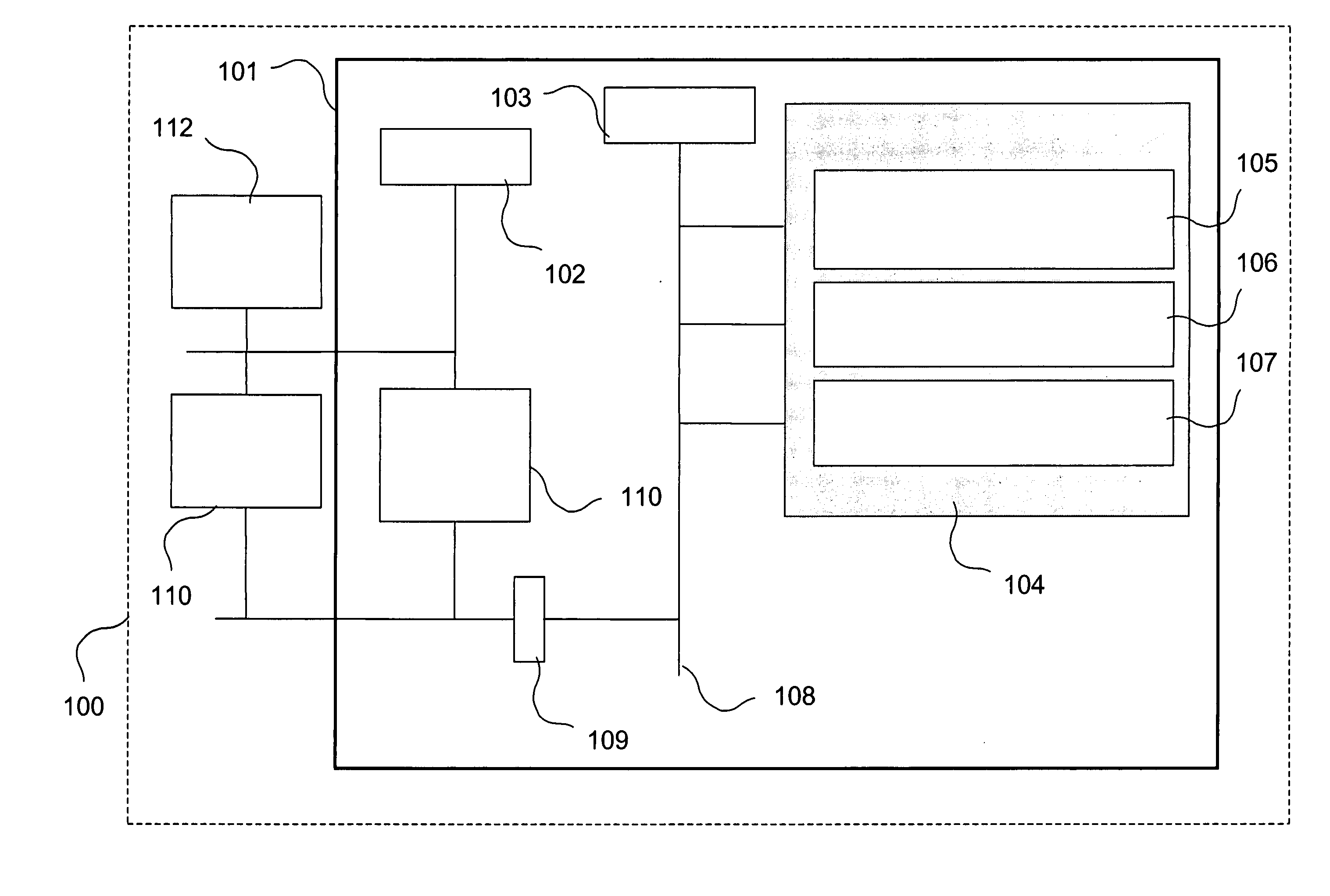Secure mode controlled memory
a technology of secure mode and controlled memory, applied in the direction of program/content distribution protection, unauthorized memory use protection, instruments, etc., can solve the problems of not being able to probe or perform measurements and tests, revealing security related components and processing, and not being perfectly resistant to security attacks. , to achieve the effect of preventing unauthorized use, preventing unauthorized use, and small performance penalty
- Summary
- Abstract
- Description
- Claims
- Application Information
AI Technical Summary
Benefits of technology
Problems solved by technology
Method used
Image
Examples
Embodiment Construction
[0040] A device architecture for providing data security is shown in FIG. 1. Such a system is further disclosed in the Applicant's international patent application publication WO2004 / 015553, which application is incorporated herein by reference. Circuitry for providing data security is implemented in the form of an ASIC 101. The processing part of the architecture contains a CPU 103 and a digital signal processor (DSP) 102. The ASIC 101, is included in an electronic appliance 100 such as a mobile telecommunication terminal, a portable computer, a PDA etc. and is considered to be the “brain” of the appliance 100.
[0041] The secure environment 104 comprises a ROM 105 from which the ASIC 101 is booted. This ROM 105 contains boot application software and an operating system. Certain application programs residing in the secure environment 104 has precedence over other application programs. In a mobile telecommunication terminal, in which the ASIC 101 can be arranged, a boot software shou...
PUM
 Login to View More
Login to View More Abstract
Description
Claims
Application Information
 Login to View More
Login to View More - R&D
- Intellectual Property
- Life Sciences
- Materials
- Tech Scout
- Unparalleled Data Quality
- Higher Quality Content
- 60% Fewer Hallucinations
Browse by: Latest US Patents, China's latest patents, Technical Efficacy Thesaurus, Application Domain, Technology Topic, Popular Technical Reports.
© 2025 PatSnap. All rights reserved.Legal|Privacy policy|Modern Slavery Act Transparency Statement|Sitemap|About US| Contact US: help@patsnap.com



